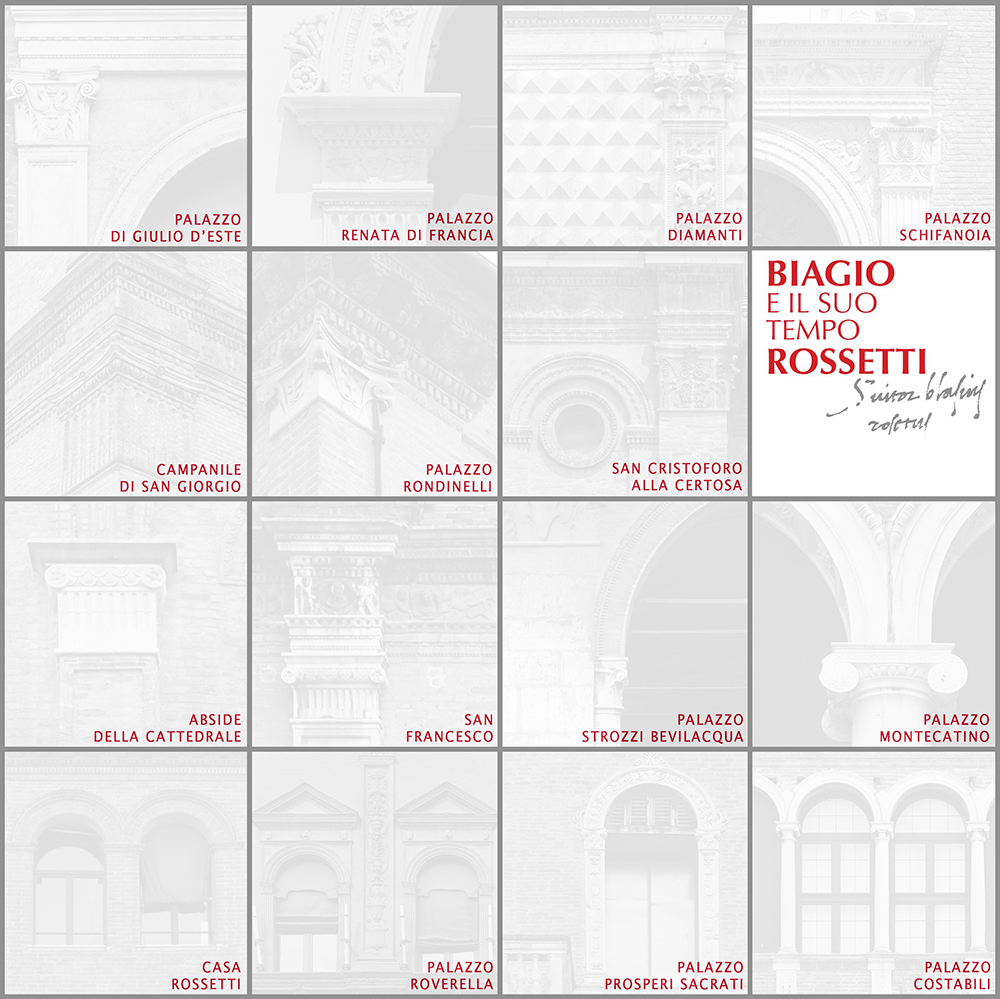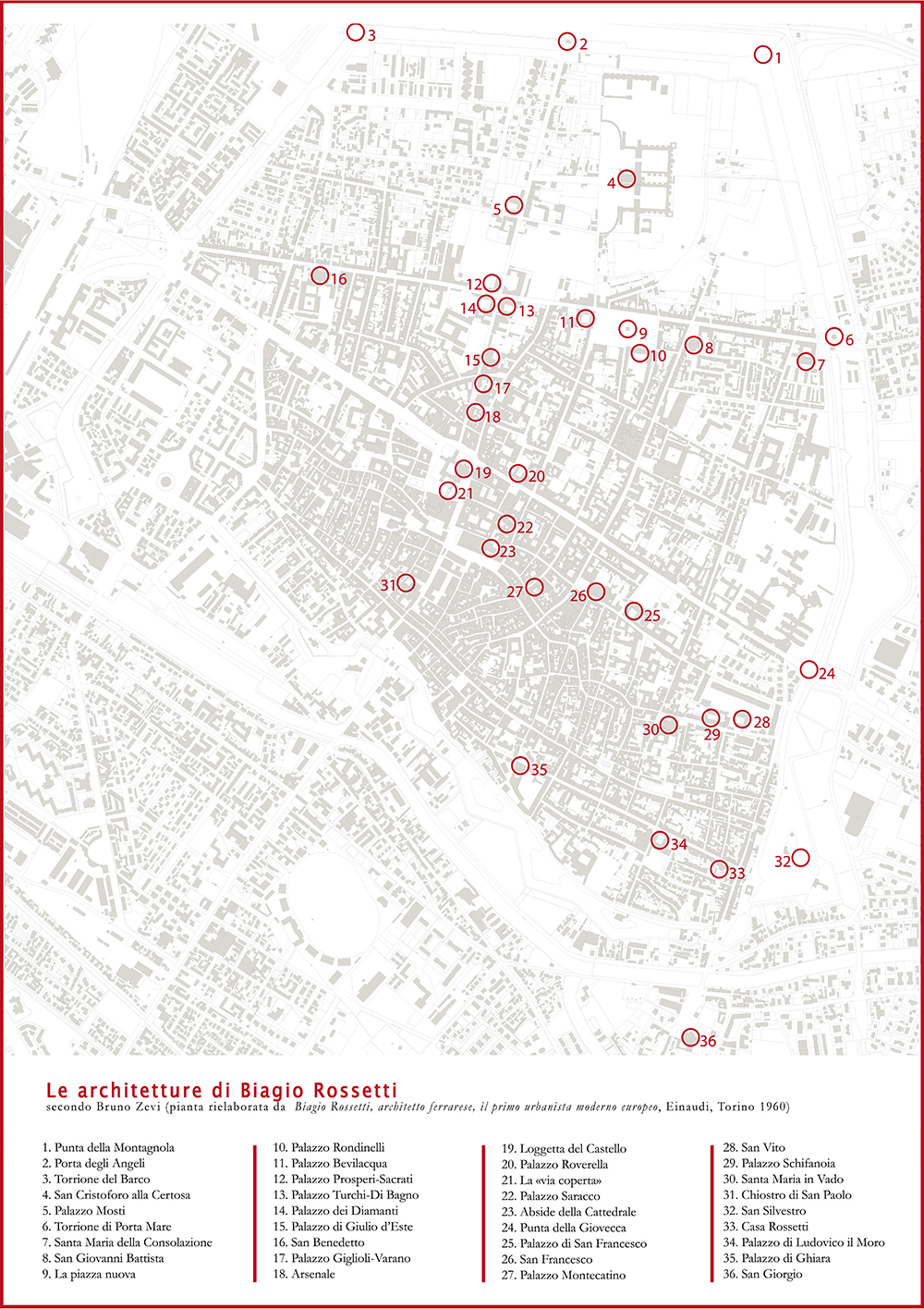International Conference “Biagio Rossetti e il suo tempo”
May 06, 2016
24-26 November 2016
Università degli Studi di Ferrara – Dipartimento di Architettura
Palazzo Tassoni, Via della Ghiara, 36, Ferrara
CALL FOR PAPERS
In occasion of the five hundredth anniversary of the death of the Ferrarese architect Biagio Rossetti (1447?-1516), the University of Ferrara is organising an international conference to promote new studies of this important figure. The study days are proposed as an opportunity for interdisciplinary comparison with the objective of investigating Rossetti’s work against the artistic and cultural backdrop of his time.
Rossetti’s critical fortune, and more in general that of Ferrara, is the result of various historic events. Beginning with the studies of Gustav Gruyer, a succession of numerous milestones has served to construct a solid base for documenting and interpreting the Estensi as clients of the arts. Contributions worthy of mention include those by Jacob Burckhardt, Aby Warburg, Werner Gundersheimer, Lewis Lockwod and Charles Rosenberg. With specific regard to Biagio Rossetti, a pioneering role was played by the monumental opus Biagio Rossetti architetto ferrarese: il primo urbanista moderno europeo by Bruno Zevi (1960), who attempted to consecrate him as the “first modern European urbanist”. A second fundamental step came with the publication of the mighty volume Herculean Ferrara: Ercole d’Este (1471-1505) and the invention of a ducal capital by Thomas Tuohy (1996) that, in the wake of new archival research, redimensioned Rossetti’s work within the strategies for the construction of Ferrara, privileging the role of the sovereign Ercole I d’Este. Despite attempts to propose a comprehensive interpretation of Rossetti’s life, diverse aspects remain to be investigated: the history of the construction sites involving this architect await further analysis – such as the Palazzi Costabili, Roverella and dei Diamanti, the churches of San Francesco and Santa Maria in Vado; on the other hand, the uncertainties tied to the catalogue of Biagio Rossetti’s oeuvre – still being defined – and doubts about his biography offer an occasion for a new approach to the issue.
The conference intends to examine the architect’s entire career in relation to the artistic and cultural context of other Italian courts. The concomitance with the celebrations planned for the five hundredth anniversary of the editio princeps of Orlando Furioso by Ludovico Ariosto draws attention to the relations with the academics and humanists of his era. Consideration will be given to texts dedicated to the analysis of individual buildings or of a more transversal nature. Of particular interest are proposals that outline the themes of a European perspective, such as the study of projects at the urban scale realised outside of Italy during the same decades and comparable to the undertaking promoted by Ercole I d’Este, or investigations of the relationships between clients, artists, architects and scientists – in diverse European states – and the exponents of the cultural and architectural circles of Ferrara during the late fifteenth century.
Proposals may examine (but need not be limited to) the following themes:
- The life and work of Biagio Rossetti
- The travels of Biagio Rossetti
- Biagio Rossetti and Italian architecture during the late fifteenth century
- Biagio Rossetti and the architects of Europe during the late fifteenth century
- Biagio Rossetti and historiography
- Biagio Rossetti and the arts
- Literature and scholars in the Ferrara of Biagio Rossetti
- Science and technique in Ferrara and Europe between the fifteenth and sixteenth centuries
- Urban history and the topography of Ferrara between the fifteenth and sixteenth centuries
- The urban system of the city during the fifteenth and sixteenth centuries
- The history of European cities during the late fifteenth century
- The Estensi and the other European courts
Selected papers will be considered (via peer-review) for publication.
Reimbursements for travel and lodging in Ferrara during the conference are available.
Proposals should correspond with 20 minute presentations.
Interested scholars are invited to submit an abstract (max. 300 words) in English or Italian together with a curriculum vitae (max. 1 page) to Veronica Balboni to the email biagiorossetti@unife.it no later than 31 May 2016.
Scientific Committee
Alessandro Ippoliti (coordinatore)
Francesco Benelli
Marco Bertozzi
Francesca Cappelletti
Francesco Ceccarelli
Riccardo Dalla Negra
Paul Davies
Vincenzo Farinella
Andrea Marchesi
Francesca Mattei
Alessandro Nova
Augusto Roca de Amicis
Scientific Secretary
Veronica Balboni
Caterina Cocchi
Promoter
Università degli Studi di Ferrara
Institutional partners
Comune di Ferrara
Ministero dei beni e delle attività culturali e del turismo
Comitato Giovani della Commissione Nazionale Italiana per l’UNESCO
In collaboration with
Arcidiocesi di Ferrara e Comacchio
Archivio di Stato di Ferrara
Archivio di Stato di Modena
Ordine degli Architetti P.P.C. della Provincia di Ferrara
Download
Biagio Rossetti Call for paper
back to top print
Post-it
ISSN 2239-6063
edited by
Alfonso Acocella
redazione materialdesign@unife.it


